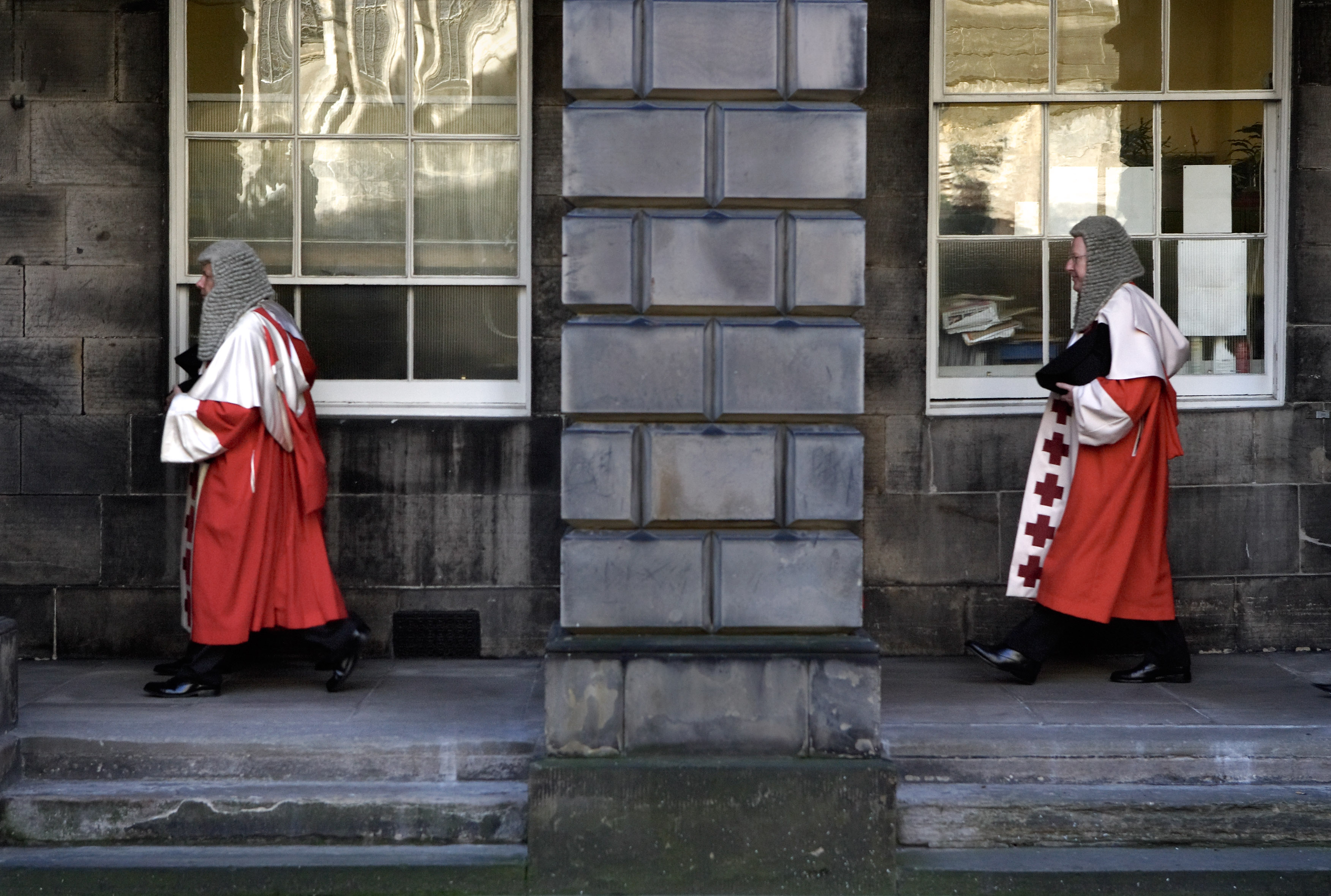TITLES AND DRESS
Read about what Supreme Courts titles mean; and what robes are worn in Scottish courts.

Honourable
In relation to the judiciary, this title (often shortened to Hon) is given to judges who sit in the Supreme Courts in Scotland. Such a judge is referred to as The Honourable Lord/Lady followed by their surname, for example, The Honourable Lord Smith. If the judge is also a member of the Privy Council, then Right (often shortened to Rt) is added, for example, The Right Honourable Lord Smith. If the judge is also a peer, it is worded, The Right Honourable the Lord Smith. Judges of the Inner House of the Court of Session are privy counsellors . Note that temporary judges are referred to as Judge Smith.
Lord Commissioner of Justiciary
This is the title of judges when they are sitting in the High Court of Justiciary.
Lord Justice Clerk
The Lord Justice Clerk is the second most senior judge in Scotland after to the Lord President of the Court of Session. The Lord Justice Clerk uses this title for both criminal and civil work.
Lord Justice General of Scotland
The Lord Justice General is the head of the College of Justice and is Scotland’s most senior judge. He or she holds two titles: the Lord President of the Court of Session; and the Lord Justice General (in relation to the High Court of Justiciary). The first title relates to civil business while the second title relates to criminal business.
Lord of Council and Session
This is the title of judges when they are sitting in the Court of Session.
Lord Ordinary
This is the title of a judge sitting in the Outer House of the Court of Session hearing a case at first instance (when it first comes to court).
Lord President of the Court of Session
The Head of the College of Justice holds two titles: the Lord President of the Court of Session, and the Lord Justice General (in relation to the High Court of Justiciary).
Right Honourable
If a judge is also a member of the Privy Council, then the word ‘Right’ is added, for example The Right Honourable Lord Smith. If the judge is also a peer, it is worded The Right Honourable the Lord Smith. Judges of the Inner House of the Court of Session are privy counsellors.
Senator of the College of Justice
The College of Justice was established in the sixteenth century. It includes, among other bodies, Scotland’s Supreme Courts (the Court of Session and the High Court of Justiciary). The Supreme Courts are presided over by judges who are known as the Senators of the College of Justice. Senators can sit in both the Court of Session and the High Court of Justiciary.
What is Worn in Court
Court dress is traditional, and has evolved over centuries.
Supreme Courts Judges
When Supreme Courts judges wear formal dress, they wear a wig and robe. In the High Court, judges wear a white robe with red crosses.
In the Court of Session, judges normally do not wear formal dress. An exception is when they are hearing evidence from witnesses in first instance cases when they will wear a crimson robe with darker red crosses.
The crosses on the robes are relics of rosettes and ribbons that formerly held the gown together, but are now simply decoration. You can view the different robes worn by the Senators of the College of Justice.
Sheriffs
Sheriffs wear a wig, and a type of black gown depending on their position before their appointment. A sheriff who is a King's Counsel wears a silk gown which has led to the expression ‘taking silk’. A sheriff who was an advocate or solicitor wears a ‘stuff’ gown which can be made from different fabrics.
Justices and Tribunal Presidents
Justices of the peace and tribunal presidents do not wear formal dress, but do dress respectfully.
Wigs
Current court wigs are short, but the traditional, long, full-bottomed wig (as pictured above) is still worn by judges on ceremonial occasions, such as the procession to mark the start of the legal year, called the 'kirking of the court'.
Agreement
Courts may agree not to wear formal dress, for example in proceedings involving children.
Addressing a Judge
Information about this can be found here.
